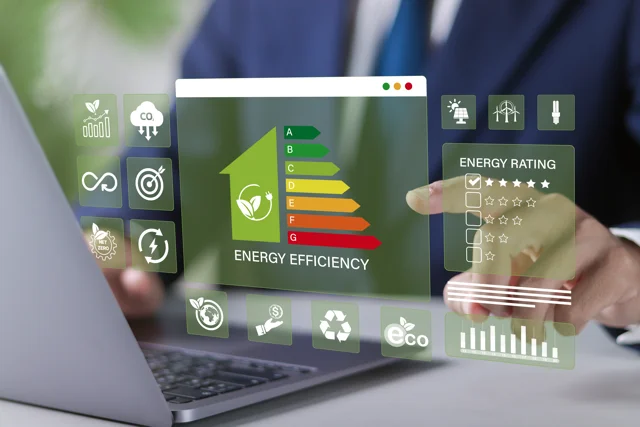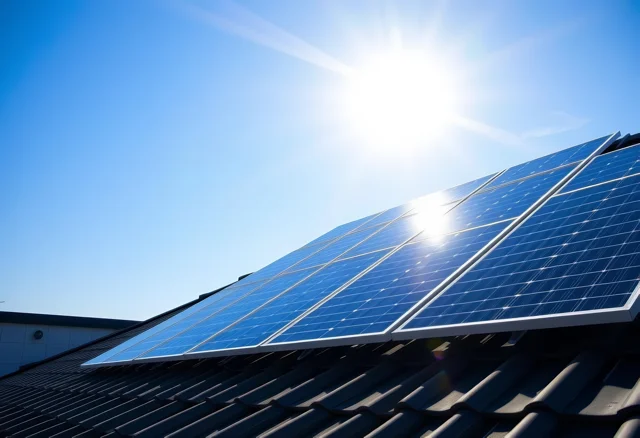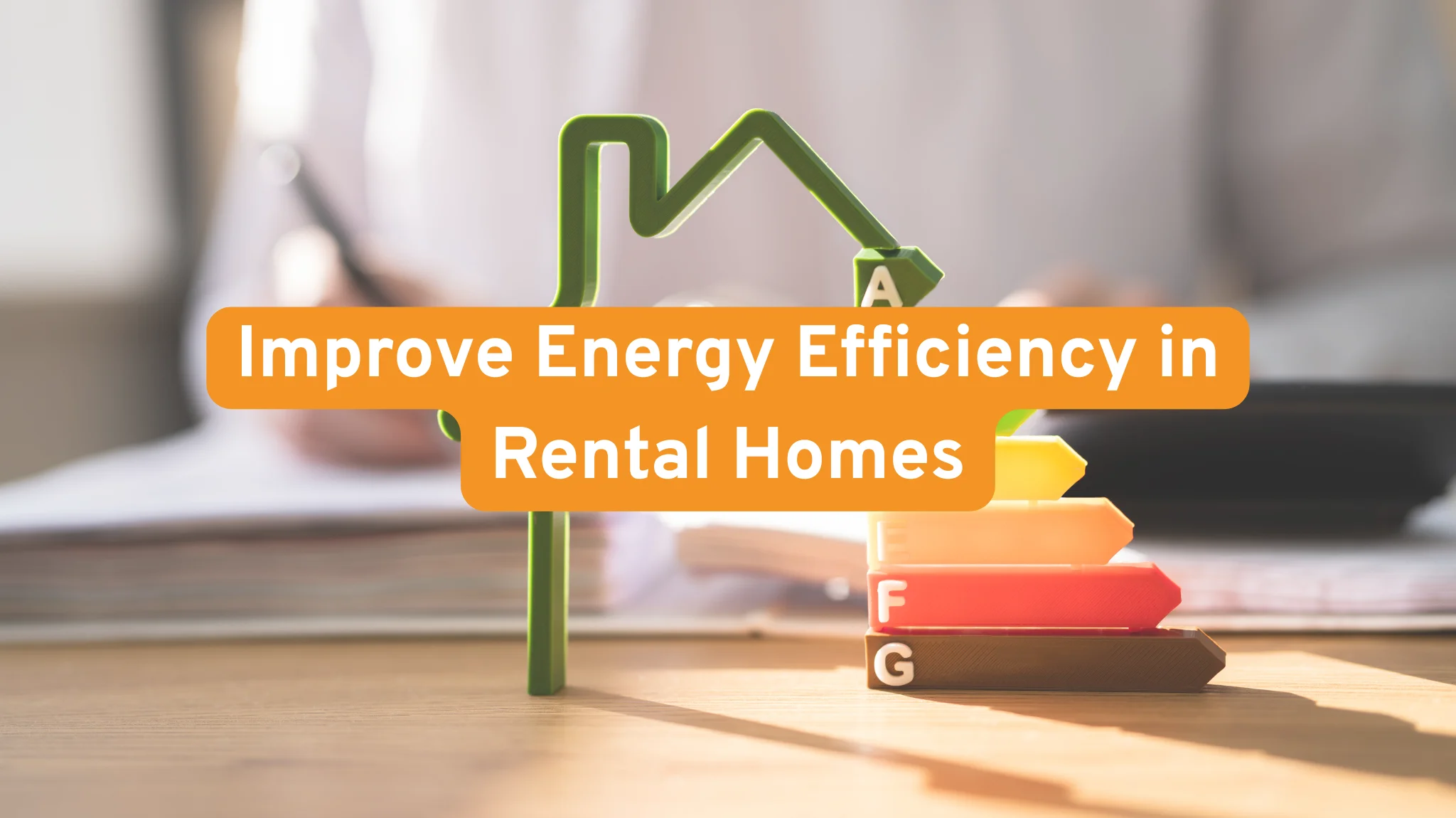Energy costs are rising, tenants are looking for greener options, and property owners are under more pressure than ever to improve energy efficiency. Whether you want to cut operating expenses, attract quality renters, or take advantage of new tax incentives, the time to act is now. This guide explains how to make a home more energy efficient, the energy efficient benefits that come with upgrades, and how landlords can use the energy efficient home improvement credit for rental property to offset costs. From simple fixes like LED lighting to larger investments like solar panels and insulation, improving efficiency is one of the smartest moves for long-term rental value.
Table of Contents
- Why Energy Efficiency Matters for Rentals
- Energy Efficient Benefits for Landlords and Tenants
- How to Make a Home More Energy Efficient
- Low-Cost Energy Saving Upgrades
- Major Home Improvement Projects
- Renewable Energy Options
- Water and Waste Efficiency
- Energy Efficient Home Improvement Credit for Rental Property
- Marketing Advantages of an Energy Efficient Property
- FAQ: Frequently Asked Questions
Why Energy Efficiency Matters for Rentals
Energy efficiency is no longer just a “nice-to-have.” It’s a must for landlords competing in today’s rental market. Tenants want lower utility bills and eco-friendly features, while owners want reduced costs and higher property value. According to the U.S. Department of Energy, heating, cooling, and water heating account for about 60% of a home’s energy use. Even small improvements can make a big difference in long-term operating costs.

Energy Efficient Benefits for Landlords and Tenants
Investing in efficiency offers multiple wins.
For landlords:
Lower maintenance costs (efficient systems break less often) Higher rental value and tenant demand Possible tax credits and rebates Stronger market differentiation in competitive areas
For tenants:
Lower monthly bills More comfortable living spaces (better insulation, airflow, and lighting) Reduced carbon footprint The EPA’s ENERGY STAR program notes that certified appliances use 10–50% less energy than standard models.
How to Make a Home More Energy Efficient
Efficiency improvements range from simple weekend projects to major capital investments. Landlords should think in terms of “quick wins” and “long-term strategies.” Key areas include: Appliances and lighting Heating, ventilation, and air conditioning (HVAC) Insulation and windows Water heating and plumbing fixtures Renewable energy sources
Low-Cost Energy Saving Upgrades
Not every change requires thousands of dollars. Start small: LED Lighting: Replacing old bulbs with LEDs cuts electricity use by 75%. Programmable Thermostats: Help tenants manage energy use and keep systems efficient. Weather Stripping & Caulking: Seals gaps around windows and doors to stop leaks. Smart Power Strips: Reduce phantom loads from electronics. Low-Flow Fixtures: Faucets and showerheads save water and lower water-heating costs. These simple changes can improve home energy efficiency immediately and pay off quickly.
Major Home Improvement Projects
When it’s time for larger upgrades, landlords can look at: Insulation Upgrades: Attics, crawl spaces, and walls keep conditioned air inside. High-Efficiency HVAC: Newer systems use less energy and last longer. Double or Triple-Pane Windows: Reduce heat loss and outside noise. Tankless Water Heaters: Heat water on demand instead of storing it. The Department of Energy estimates that improving insulation and sealing air leaks can cut heating and cooling costs by up to 20%.
Renewable Energy Options
For landlords ready to invest, renewable energy offers major long-term savings. Solar Panels: Ideal in sunny regions. Lower electricity bills and increase property value. Solar Water Heaters: Provide hot water using solar energy. Geothermal Heat Pumps: Use underground temps for heating and cooling. The Solar Energy Industries Association reports that solar installation costs have dropped by more than 50% over the last decade, making it more accessible.

Water and Waste Efficiency
Energy efficiency isn’t just about electricity. Water and waste matter too. Native Landscaping: Reduces watering needs. Rainwater Harvesting: Collects water for irrigation. Composting Programs: Reduce landfill waste and improve soil. Recycling Stations: Encourage sustainable tenant behavior. The EPA notes that indoor water use in a typical single-family home is nearly 70 gallons per person per day — so efficient fixtures make a real difference.
Energy Efficient Home Improvement Credit for Rental Property
One of the most overlooked energy efficient benefits for landlords is the Energy Efficient Home Improvement Credit, part of the Inflation Reduction Act. Covers upgrades like HVAC, windows, doors, insulation, and more. Provides up to 30% of qualified expenses. Some limits apply to rental property owners, but many improvements still qualify. The IRS explains eligibility and covered improvements in its official guidance.
Marketing Advantages of an Energy Efficient Property
Efficiency isn’t just about saving money. It helps you stand out. Listings: Advertise “energy efficient” features in your property marketing. Tenant Retention: Renters are more likely to stay in comfortable, affordable homes. Higher Rents: Some markets support premium rents for energy efficient properties. Green Certifications: Programs like ENERGY STAR and LEED add credibility.
FAQ: Frequently Asked Questions
What are the benefits of an energy efficient home?
Energy efficient homes lower utility bills, reduce environmental impact, and improve comfort with better insulation, lighting, and HVAC systems.
How can landlords improve energy efficiency affordably?
Start with LED lighting, programmable thermostats, sealing leaks, and upgrading appliances before moving into major renovations.
Do energy efficient upgrades increase property value?
Yes. Studies show buyers and renters are willing to pay more for energy efficient properties, making upgrades a smart investment.
Can landlords claim tax credits for energy efficient upgrades?
Yes, in many cases. The Energy Efficient Home Improvement Credit allows owners to claim a percentage of qualifying expenses.
What is the easiest way to improve home energy efficiency?
Replacing old lightbulbs with LEDs and sealing window gaps are quick wins.
Are energy efficient appliances worth it for rentals?
Yes. They use less energy, last longer, and lower tenant bills, making your property more attractive.
Do solar panels make sense for rental property?
In sunny regions, yes. They reduce long-term operating costs and increase property value.
How do I market my energy efficient rental?
Highlight lower utility bills, eco-friendly features, and certifications in your listing descriptions.
Can tenants benefit directly from landlord energy improvements?
Yes. Tenants see lower bills and better comfort, while landlords benefit from higher retention.
Call to Action
Ready to improve energy efficiency in your rental property? At Osto Property Management, we help landlords implement cost-saving, eco-friendly upgrades that attract tenants and protect investments. Whether you’re curious about tax credits, need vendor connections, or want to market your property as energy efficient, we can help.
👉 Contact Osto Property Management today to learn more.


